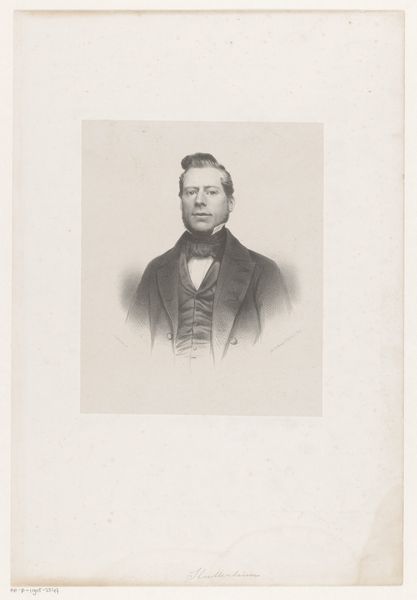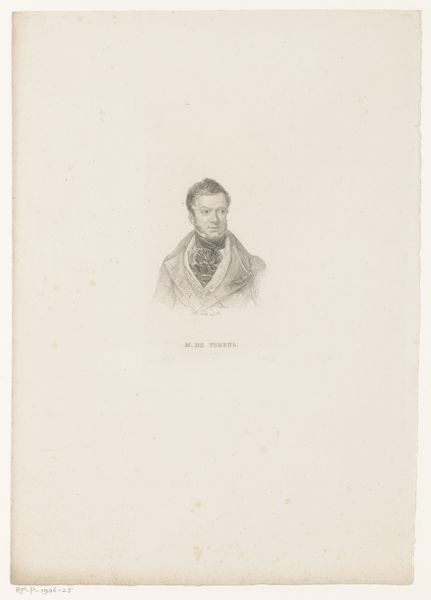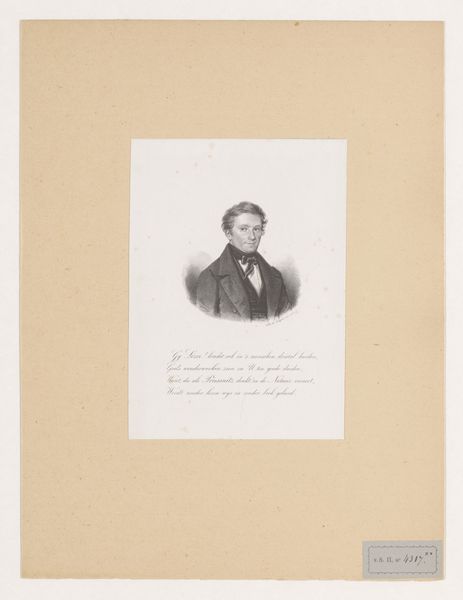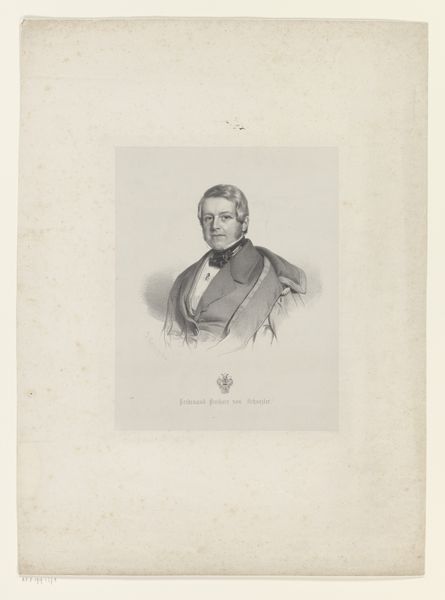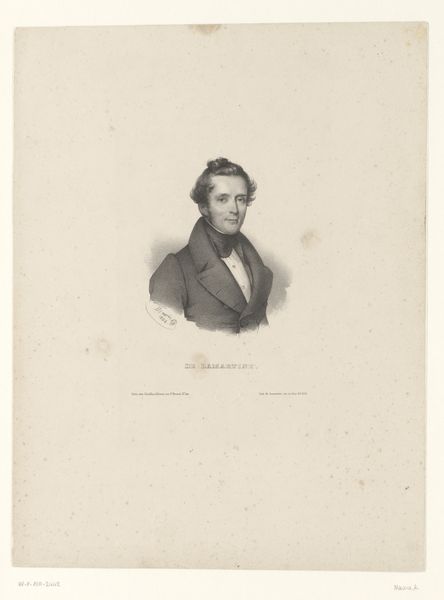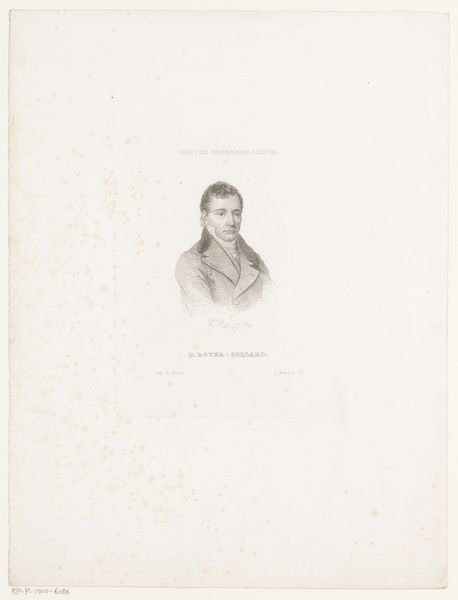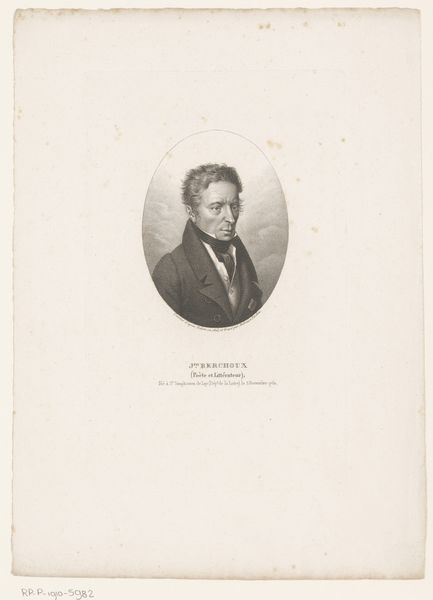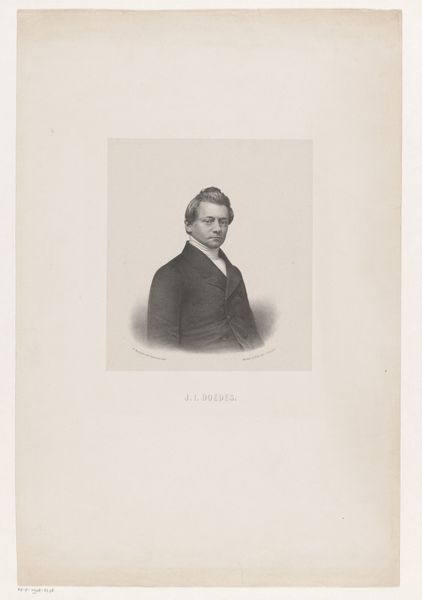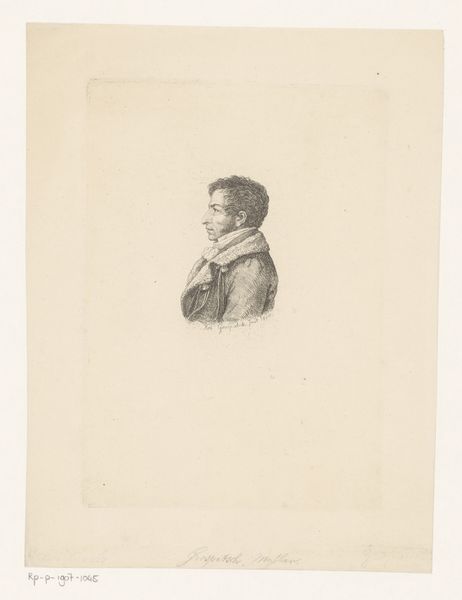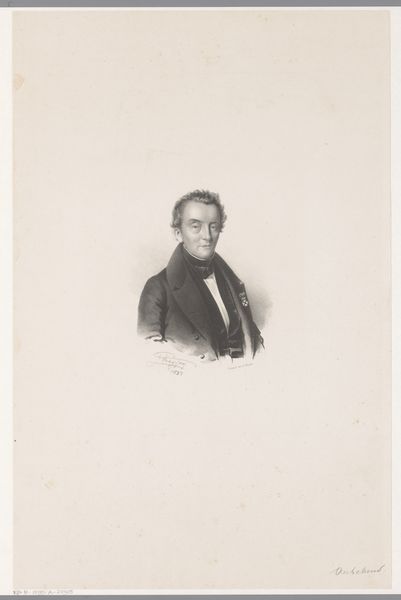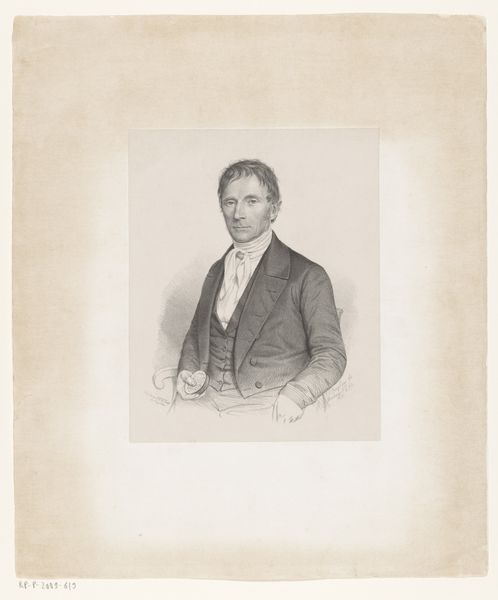
print, paper, engraving
#
portrait
#
pencil drawn
#
aged paper
# print
#
paper
#
line
#
engraving
Dimensions: height 234 mm, width 182 mm
Copyright: Rijks Museum: Open Domain
F. Richter made this undated print of Louis-Joseph Papineau, using a technique of engraving. The careful construction of Papineau’s image, with his neatly styled hair and fashionable attire, speaks to the role of portraiture in shaping political personas. Papineau was the leader of the Patriote movement in Lower Canada, now Quebec, in the early 19th century, during a time of political and social upheaval. This engraving likely circulated as a means of both celebrating and disseminating his image among supporters. Examining the print through the lens of social and political history reveals how visual media contributed to the construction of national identity and political movements. Art historians can use archival sources, such as letters, pamphlets, and newspapers, to understand the print's reception and impact on public opinion during this period. The meaning of the portrait is contingent on the social and institutional contexts of its creation and circulation.
Comments
No comments
Be the first to comment and join the conversation on the ultimate creative platform.

